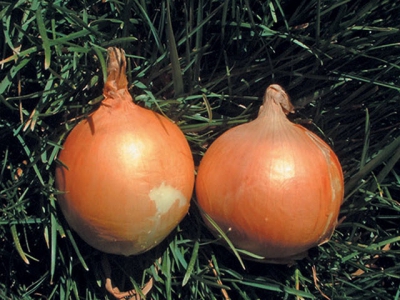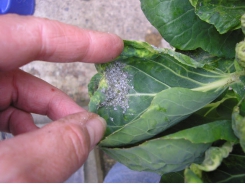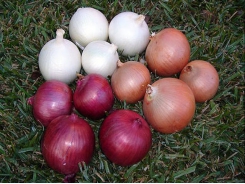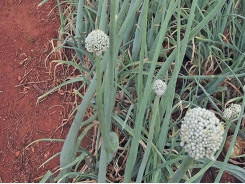Choose the right onion variety

Choosing the right type of onion can be difficult, as the variety has to suit both the area and the planting seasons.
These handsome brown onions are typical of those grown in the Southern Cape. Photo: Bill Kerr
The first challenge is that the initiation of bulb development depends on daylight length. If the seeds are planted when daylight length is correct, it is likely that the seedlings will bulb when the plants are only matchstick-thick.
The bulbs will then be very small, commensurate with the size of the plants. Onion types can be classified as short, intermediate and long daylight-length types.
The Highveld down to the latitude of approximately Bloemfontein is a short daylight-length area. Intermediate types are grown further south. Long daylight-length types are not grown in South Africa.
Intermediate types planted on the Highveld will not bulb, or else produce poor results. In a sunny, hot year, one might be partially successful, but then the crop will be growing at a time when diseases are likely to take a toll.
I am amazed that seed companies place Australian Brown, an intermediate type, on seed racks in the Highveld; they set uninformed gardeners up for failure.
Within each category, slight variations in bulb initiation result in harvesting weeks or even months apart. Short-daylight types generally have a far shorter storage life. This is not usually a problem, as few farmers would harvest early and keep the crop in storage while market volumes increase and the price declines.
Intermediate daylight types mature considerably later than in the northern areas of the country; they also tend to be more pungent and have a far longer shelf life. By the time these Cape onions are lifted, the vegetable is out of season in the northern areas, and growers have a choice of marketing them straight away locally or keeping them in storage for export.
Higher yield
Cape-grown onions are usually brown with thick, protective outer scales, and are visually appealing. The yield potential of Cape-grown onions is higher than those grown further north because of the longer daylight length and higher temperatures during the most active growing period.
The extra sunlight enables the plants to extract more energy from the sun. It also means that farmers can produce larger onions.
If the market does not want larger onions, a farmer should increase his plant population. (In the northern areas, similar numbers would result in small onions with many unmarketable runts in between.)
How to ensure success
It’s not for nothing that the old saying goes “You have to know your onions”. To grow this vegetable with confidence, you need a sound understanding of plant population, region, variety and several other aspects.
You should be able to get by if you follow the practices of a successful farmer in your area, but deviate from these slightly and you could face major problems.
Tools

Phối trộn thức ăn chăn nuôi

Pha dung dịch thủy canh

Định mức cho tôm ăn

Phối trộn phân bón NPK

Xác định tỷ lệ tôm sống

Chuyển đổi đơn vị phân bón

Xác định công suất sục khí

Chuyển đổi đơn vị tôm

Tính diện tích nhà kính

Tính thể tích ao




 The cavity seedling option
The cavity seedling option  Planting dates for onions
Planting dates for onions